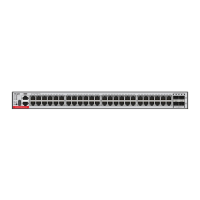Command Reference NSM Commands
5.8 ipv6 route
Use this command to configure an ipv6 static route. Use the no or default form of this command to restore
the default setting.
ipv6 route ipv6-prefix / prefix-length { ipv6-address | interface [ ipv6-address ] } [ distance ] [ tag tag ]
[ weight number ] [ description description-text ]
no ipv6 routeipv6-prefix / prefix-length { ipv6-address | interface [ ipv6-address ] } [ distance ]
default ipv6 route ipv6-prefix / prefix-length { ipv6-address | interface [ ipv6-address ] } [ distance ]
Mask length of the destination
The next hop IP address of the static route
(Optional) The next hop egress of the static route
(Optional) The administrative distance of the static route.
The default is 1.
(Optional) The tag value of the static route. The default is 0.
(Optional) Indicates the weight of the static route, which
must be specified when you configure equal-cost routes.
The weight ranges from 1 to 8. When the weights of all
equal-cost routes of a route are summed up, the sum
cannot exceed the maximum number of equal-cost routes
that can be configured for the route. Weighting of
equal-cost routes of a route indicates the traffic ratio of
these routes. The weight is 1 by default.
descriptiondescription-text
(Optional) Indicates the description of the static route. By
default, no description is configured. description-text is a
string of one to 60 characters.
No IPv6 static route is configured by default.
Global configuration mode
The following example adds a static route to the destination network of 2001::/64 whose next hop is
2002::2 and administrative distance are 115.
ipv6 route 2001::/64 2002::2 115
If the static route has not a specific interface, data flows may be sent thought other interface in case of
interface failure. The following example configures that data flows are sent through fastehternet 0/0 to
the destination network of 2001::/64.
ipv6 route 2001::/64 fastethernet 0/0 2002::2

